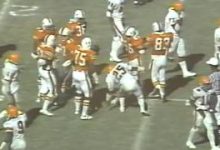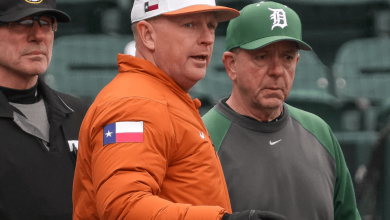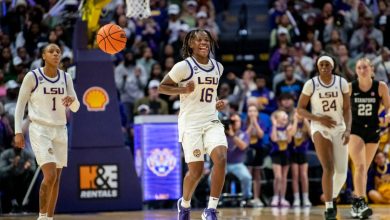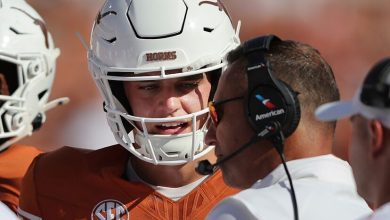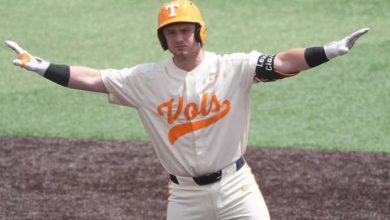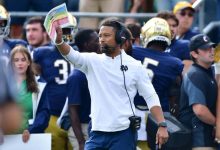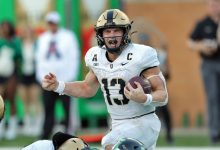An Ohio judge has dismissed Terrelle Pryor’s lawsuit against Ohio State, the Big Ten, and the NCAA, alleging denied NIL compensation, citing legal and procedural reasons.

In a significant development within college athletics, Ohio State former star quarterback Terrelle Pryor’s lawsuit claiming denial of NIL (Name, Image, Likeness) compensation has been dismissed by an Ohio court. The ruling marks a pivotal moment in the ongoing debate over athletes’ rights to profit from their NIL and the legal boundaries surrounding collegiate sports organizations’ authority.
This article delves into the background of Pryor’s lawsuit, the legal reasoning behind the court’s dismissal, its implications for NIL rights, and the broader landscape of athlete compensation in college sports.
Background: Pryor’s Lawsuit and the NIL Landscape
Terrelle Pryor, a standout quarterback at Ohio State University from 2008 to 2010, became a prominent figure in the NCAA’s enforcement history due to his involvement in the university’s memorabilia scandal. After his college career, Pryor pursued an NFL career, but his legal battle with NCAA institutions over NIL rights has been a notable aspect of his post-collegiate activism.
Pryor’s lawsuit was filed in 2022, asserting that NCAA, Ohio State, and the Big Ten Conference unlawfully denied him NIL compensation, violating his rights as an athlete to profit from his own name and likeness. The suit argued that the NCAA’s rules and policies, which restrict athletes from earning money from their NIL, were unconstitutional or otherwise unlawful, especially considering the evolving legal landscape that had begun to recognize athletes’ NIL rights more broadly.
This lawsuit emerged during a period of rapid change in college sports, with several states passing NIL legislation, the NCAA updating its policies, and courts addressing the legality of athlete compensation. Pryor’s legal challenge aimed to set a precedent that athletes should have the right to monetize their NIL without restrictions imposed by collegiate governing bodies.
The Legal Framework: NIL Rights and NCAA Policies
The core legal question in Pryor’s lawsuit centered on whether the NCAA’s restrictions on athletes earning NIL compensation violated constitutional rights or state laws. Historically, NCAA rules prohibited athletes from earning money based on their athletic participation, leading to frequent legal challenges and legal reforms.
In recent years, courts and legislatures have shifted toward granting athletes NIL rights:
- California’s Fair Pay to Play Act (2019): Allowed college athletes in California to profit from NIL, inspiring similar legislative efforts nationwide.
- NCAA Policy Changes (2021): The NCAA adopted NIL rules permitting athletes to earn compensation from endorsements and other activities, though with certain restrictions.
- Legal Challenges: Courts have addressed whether NCAA restrictions violate antitrust laws or athletes’ rights. Notably, the 2021 Supreme Court case National Collegiate Athletic Association v. Alston upheld that the NCAA’s restrictions on education-related benefits violated antitrust laws.
Despite these developments, the NCAA and some institutions have maintained that they retain authority over NIL regulations, citing the importance of maintaining amateurism standards and preserving collegiate athletics’ integrity.
The Court’s Rationale for Dismissing Pryor’s Lawsuit
In dismissing Pryor’s lawsuit, the Ohio court cited several legal and procedural reasons, emphasizing the limits of judicial authority over NCAA policies and the complex constitutional questions involved.
Key reasons for the dismissal included:
- Lack of Standing: The court determined Pryor lacked the standing to pursue the claims, as he was no longer an active athlete or directly affected by current NCAA policies at the time of filing. The court emphasized that the legal rights concerning NIL are ongoing and evolving, and Pryor’s status as a former athlete did not grant him sufficient standing to challenge current rules.
- Sovereign Immunity and NCAA Autonomy: The court recognized that the NCAA enjoys certain protections under sovereign immunity and federal statutes, which limit judicial interference in its governance of amateur sports. The court suggested that disputes over NIL regulation are better addressed through legislation rather than individual lawsuits.
- Procedural Issues: The court noted procedural deficiencies in Pryor’s complaint, including insufficient allegations that directly demonstrated how NCAA, Ohio State, or the Big Ten violated specific legal rights. The court emphasized the need for clear legal claims and concrete injury, which it found lacking.
- Legal Precedent and Policy Considerations: The court cited prior rulings emphasizing the NCAA’s authority to regulate amateurism and NIL policies within the scope of their organizational autonomy. The court expressed skepticism about courts second-guessing NCAA governance, especially in the absence of explicit violations of constitutional rights.
In sum, the court’s reasoning centered on the idea that the dispute over NIL rights is primarily a legislative matter, not one for judicial resolution, especially when the plaintiff is a former athlete no longer directly impacted by the current policies.
Broader Implications of the Dismissal
The court’s dismissal of Pryor’s lawsuit underscores several key themes and future considerations in college sports:
1. Legal Limitations on Athletes’ NIL Claims
While athletes have gained more rights and recognition regarding their NIL, Pryor’s case highlights the legal challenges they face when seeking to enforce those rights through litigation. Courts appear reluctant to interfere with NCAA governance absent clear constitutional violations.
This suggests that future NIL reforms are more likely to originate from legislation and NCAA policy changes rather than judicial rulings. Athletes seeking compensation may need to pursue legislative avenues or collective bargaining approaches rather than relying solely on litigation.
2. The Role of Legislation and Policy
The case emphasizes the importance of state legislation like California’s NIL law and federal policy developments. These legislative efforts provide clearer pathways for athletes to profit from their NIL rights and circumvent legal obstacles that courts might impose.
Lawmakers and governing bodies are increasingly viewed as the primary agents for establishing fair NIL policies, rather than courts, which may be constrained by legal doctrines protecting organizational autonomy.
3. The Evolving Nature of NCAA Governance
The NCAA’s authority to regulate amateurism and NIL is increasingly challenged. The Alston decision and other legal precedents have begun to chip away at the NCAA’s traditional restrictions. However, the Pryor case illustrates that the NCAA still enjoys significant legal protections, and its policies remain subject to legal scrutiny primarily through legislative or collective bargaining channels.
4. Athletes’ Rights and the Future of Compensation
Despite the setback in Pryor’s lawsuit, the broader movement toward athlete compensation and NIL rights continues to grow. Many athletes, advocates, and policymakers believe that NIL rights are fundamental and should be protected by law, not limited by organizational policies.
This case signals that litigation alone may not be sufficient to secure widespread athlete compensation rights, and more comprehensive legal reforms are needed to establish clear protections.
The Significance for College Athletes and Stakeholders
The court’s decision has mixed implications for athletes:
- For former athletes: The ruling suggests that claims related to NIL compensation after their athletic careers may face legal hurdles due to standing and procedural issues.
- For current athletes: It underscores the importance of legislative protections and the need to advocate for clear NIL rights through policy reform rather than relying solely on litigation.
- For colleges and athletic programs: The case reinforces the idea that NIL governance is primarily a legislative and organizational issue, not one to be resolved solely through court rulings.
In practical terms, athletes and advocates should focus on:
- Engaging with lawmakers to pass NIL legislation that explicitly grants rights and protections.
- Negotiating NIL agreements within the existing legal framework.
- Pushing for policies that balance athlete rights with organizational autonomy.
Broader Context: The Future of NIL and College Sports
The Pryor case, and its judicial dismissal, reflect ongoing tensions between athlete rights, organizational authority, and legal boundaries.
Key trends include:
- Legislative momentum: States and federal governments are increasingly involved in establishing NIL rights.
- Legal challenges: Courts remain cautious about intervening in NCAA governance but may address specific legal violations, especially constitutional ones.
- Organizational reforms: The NCAA and conferences are continually updating policies to better accommodate NIL rights, though disagreements persist.
- Collective bargaining: There is growing interest in unions or collective agreements to secure athlete compensation and protections.
Ultimately, the future of NIL rights hinges on a combination of legal reforms, legislative action, NCAA policy adjustments, and athlete advocacy.
A Landmark Yet Cautious Step Forward
The Ohio court’s dismissal of Terrelle Pryor’s lawsuit represents a cautious judicial stance on athlete NIL rights. While it halts Pryor’s specific legal challenge, it also underscores the necessity for legislative and policy reforms to establish clear, enforceable rights for athletes.
This case exemplifies the complexities of balancing athlete rights with institutional autonomy and highlights that the path toward fair NIL compensation is multifaceted, requiring cooperation among athletes, policymakers, and governing bodies.
As college sports continue to evolve, the emphasis will likely shift toward legislative initiatives and organizational reforms, with litigation playing a supporting but limited role. Athletes seeking to profit from their NIL rights must navigate a landscape marked by legal, procedural, and policy challenges, but the momentum for change remains strong.
In the end, Pryor’s case and its dismissal serve as a reminder that the fight for athlete compensation and rights is ongoing, demanding strategic advocacy and legal clarity to ensure a fairer, more equitable future for college athletes.


